These Amazing Archaeological Finds Will Leave You Awestruck
Life
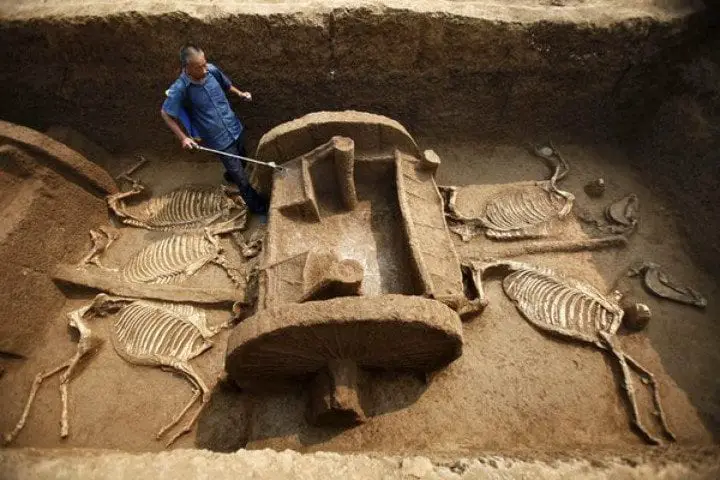
1. Vampire Graves
The Earth is estimated to be over 4 billion years, and since the human history dates only several million years, a majority of the Earth's history is unknown to man. Ancient fossils and artifacts buried deep below the Earth’s surface give us clues as to what life was like and how our history unfolded. Archaeologists attempt to fill in the gaps of history to the best of their abilities but some discoveries are simply out of this world, and it makes you question everything that you believe about the human history. Some of the technological advancements that were witnessed from these discovered fossils makes you think of how advanced these people might have been. Take an expedition with us around the world to discover the Earth’s most shocking archaeological finds.
One of these strange discoveries is one from Bulgaria, where multiple corpses were discovered impaled with iron rods through their chests. Archaeological evidence shows that the corpses date back around 700 years. As is commonly believed that pure iron was used as a deterrent for vampires, this has lead to multiple people believing that there existed vampires in ancient Eastern Europe. There was also believed to have been witches in Western Europe and the Americas.
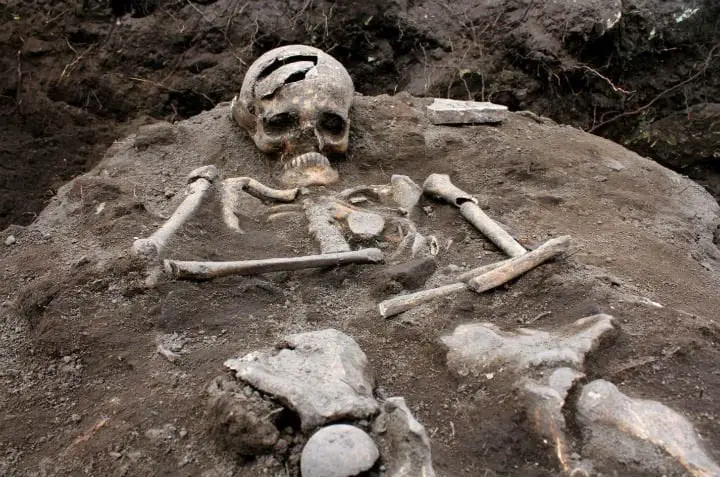
The discovery was made at the ancient temple of Perperion, near modern-day Sofia. The locals believed that vampires would not rise from the dead if buried with a stake through their hearts, something that has been seen in modern movies. Many people suffered this fate as they were believed to be vampires and some have even been discovered with their heads chopped off. Some believe there were no vampires but actually planned murders.
2. Piri Reis Map
In 1513 Ottoman admiral and cartographer Piri Reis compiled a world map depicting continents and coastlines with some accuracy which were thought to be undiscovered at the time. Even though the continents of Antarctica was not discovered until 1818, one is made to wonder what technology this Ottoman admiral employed.
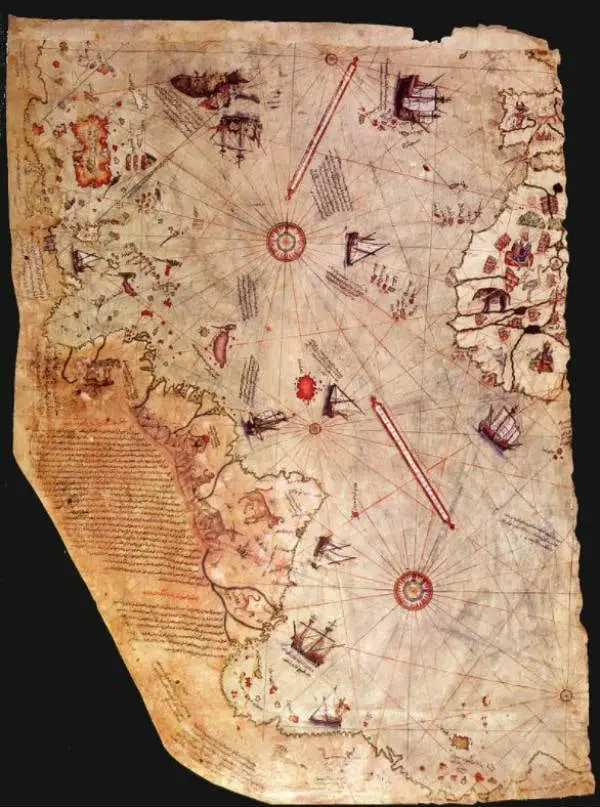
From the map, Antarctica and South America are seen to have been merged through a land form, even though this is not the case. Also, The Piri Reis map describes the continent of Antarctica before it was covered in ice. This has led to some researchers hypothesizing that advanced knowledge was handed down from a prehistoric sea-faring civilization.
3. The Mount Owen Moa
Three decades ago, a terrifying discovery was made in the caves of Mount Owen in New Zealand. It was what appeared to have been a large claw that belonged to a 3,300-year-old mummified upland moa, a prehistoric bird.
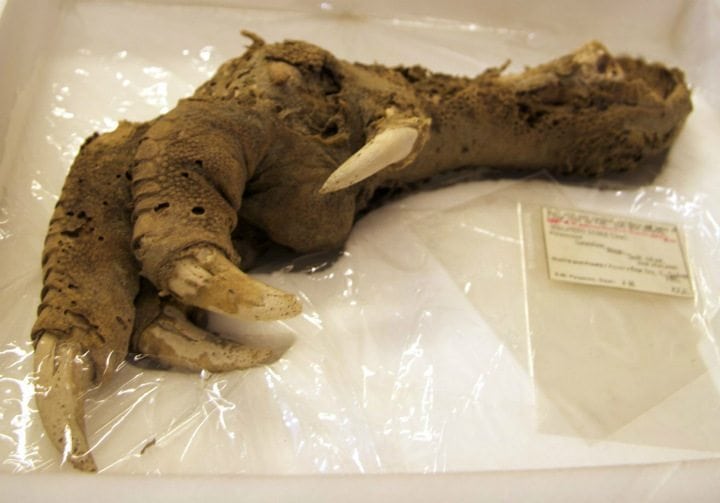
The moa resembles modern-day emus, only greatly larger. The species is believed to have measured 10 feet in height and the DNA analysis show that the first moa appeared around 18.5 million years ago. This species might have been extinct for the same reason that the dinosaurs did. There have been recent attempts by scientists to revive these animals, such as the moa and the wooly mammoth.
4. Alien Skulls
In 1999 multiple alien-like skulls were unearthed in a small Mexican village. This stirred controversy among theorists and it led to further investigation. The site contained 25 human burials, 13 of them had deformed elongated skulls, much like Hollywood depictions of aliens. It was however concluded that the skulls belonged to humans.
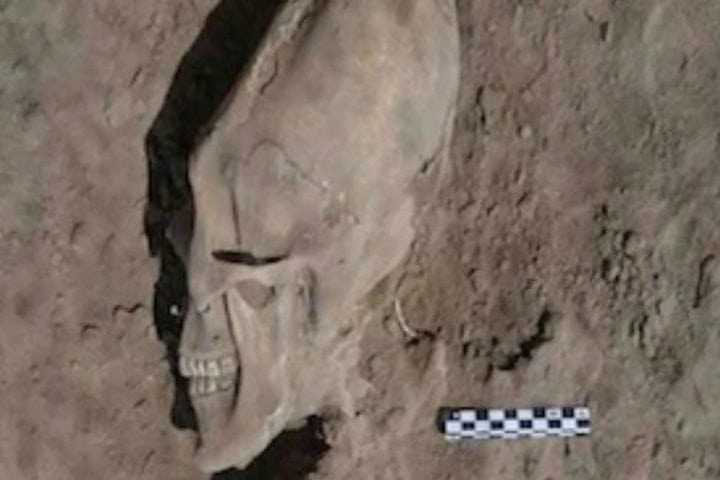
Cranial elongation was a common practice among pre-Hispanic populations. When children were born, their soft skulls were compressed between two wooden boards and they thus looked elongated,and this was assumed to have been a sign of high intelligence and enhanced beauty. Cranial elongation has been practiced by multiple cultures around the world, the earliest examples can be dated back 10,000 years ago. This practice was also practiced in ancient Egypt among the royals.
5. Shroud of Turin
The controversial Shroud of Turin is a linen cloth which bears the image of a man many believe to be Jesus of Nazareth. The cloth was first made public in a French exhibition back in 1357. This drew the curiosity of scientists and thus led to three carbon dating tests being conducted on it. It emerged that the linen dated to a period between 1260 and 1390.
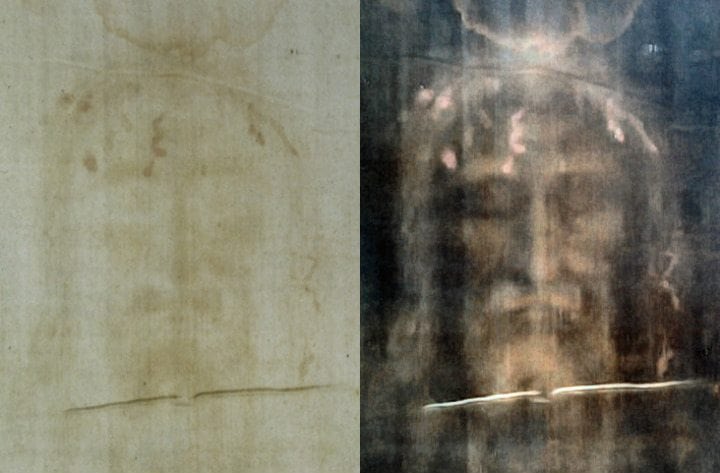
Some researchers have attempted to highlight concerns with the carbon dating results but none of the challenges have been successful. DNA testing was also performed on the shroud but only showed that the item had been touch by people from all around the world. The authenticity of this linen has remained in question, with conservative Christians taking it as a true representation of Jesus' time on Earth. The Vatican has generally refrained from commenting of its authenticity and focused on what it represents.
6. Mesoamerican Pok ta Pok text
Discovery of ancient Mesoamerican sites such as Caracol and Chichen Itza led to the archaeological finds of an ancient sport played by the indigenous populations, today referred to as “pok ta pok.” To date, at least 1,300 ball courts have been found.
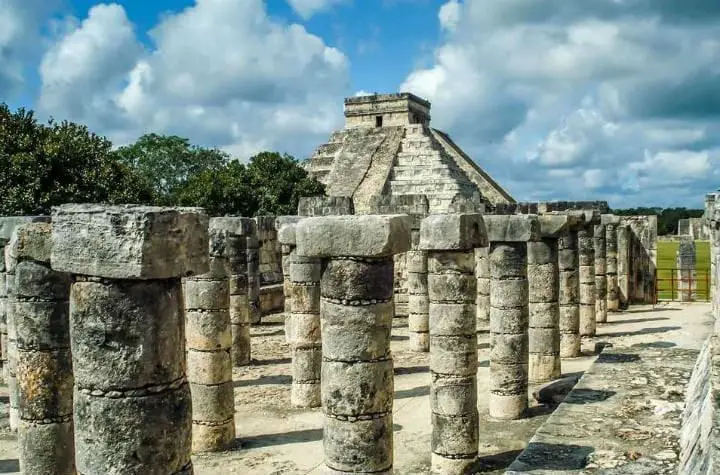
In the religion, this sport played a ritualistic and political purpose for the inhabitants of the region which spanned across empires. After the game, the losing side was in for a twist as the team's captain or members of the team were offered as human sacrifices. There is also speculation that the decapitated heads would then be used as game balls, for a victory lap so to speak. This might have been even more horrific as it sounds, with all those heads being paraded in a "celebration"
7. Baby Sewer
In 1988 archaeologists discovered the remains of at least 97 babies in an ancient Roman sewer under the modern Israeli city of Ashkelon. This is the largest infant mass grave in history to ever be discovered. Further examination showed that the babies were over a week old and were healthy at the time of death.
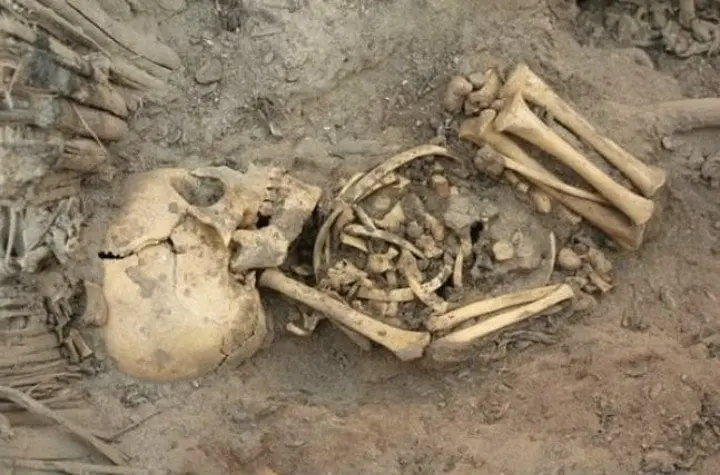
The excavation took place under an ancient bathhouse which is believed to have doubled as a brothel. The unwanted babies, most of which were male, were dumped a little after birth. These are believed to have been the children of the workers in these brothels, who were not allowed to have children. In Roman culture new-born babies were not considered fully human and if the baby was unwanted then they would be abandoned and their fates “left to the Gods.”
8. Stonehenge
This has to be one of the most famous and mysterious archaeological sites, which was made more famous by the Microsoft wallpaper. It believed to have been constructed 5,000 years ago. It is believed to have been used by the ancients as a burial ground.
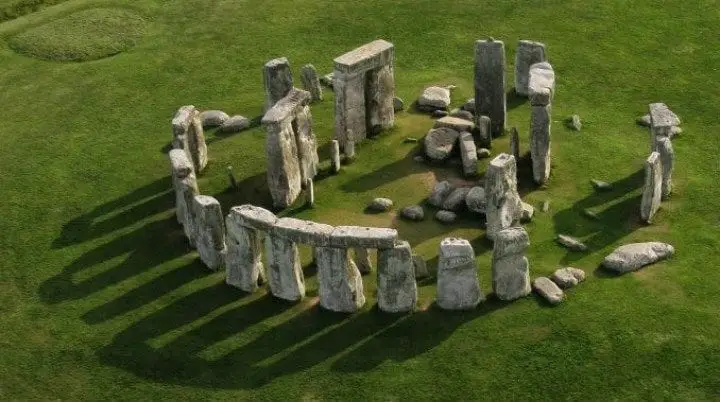
Some of the giant standing stones weigh-in at around 25 tons, and this has lead many to wonder how they managed to put up these stones, given the common belief that ancient people used less sophisticated tools. The Stonehenge is considered a religious site among pagans, most especially the Druids.
Some theorize that Stonehenge was a sacred place with healing powers or possibly a celestial observatory. This craze over the site and its surrounding was declared a UNESCO World Heritage Site in 1986.
9. Frozen Mummies
In 1999 three Inca children were discovered frozen near the Argentinian volcano Llullaillaco, their bodies mummified by the freezing cold. It is believed that these two girls were sacrificed around 500 years ago and consumed alcohol and coca leaves.
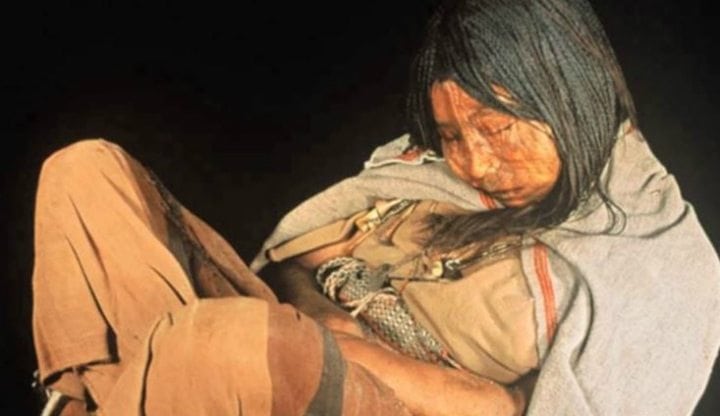
One of the girls is believed to have been of high status and the other two were her attendants. This is a common practice that was rampant and was very common among the ancient Egyptians. Scientists believe they were sedated before they died due to the high coca leaves in their system.
10. Plain of Jars
Explorers discovered thousands of mysterious stone jars arranged in clusters in Laos. The jars greatly vary in size and are thought to have been used for burial. Around the jars, there were found other commodities that were believed to have belonged to these people, a practice where people were buried with their belongings.
The site dates back to 500 BC to 500 AD.
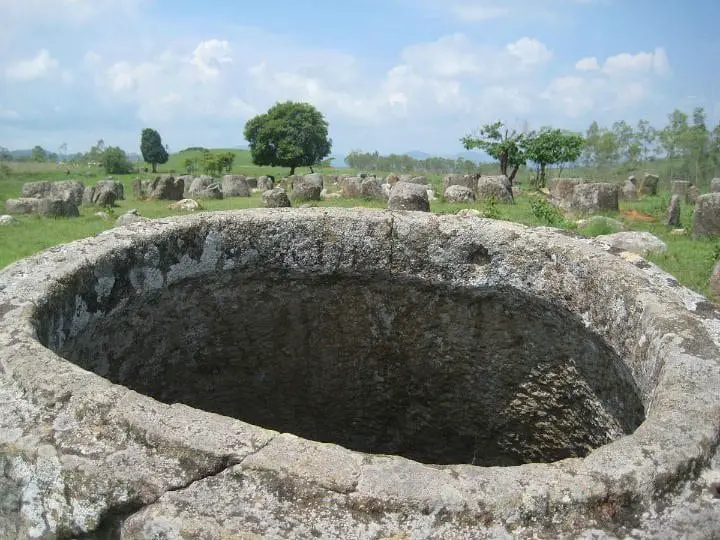
According to local legends, giants once inhabited the region and their king would store alcohol in the jars to celebrate their war victories. Scientists however believe that the tins were were used as kilns and not as believed by the locals.
11. Dorset Vikings text
A mass grave of 51 heads and 54 skeletons of Scandinavian Vikings were unearthed in Weymouth England. The heads were buried separately from the bodies and this discovery sent shock waves all over, with some saying some heads had not been found. It is believed that this took place at around 970 and 1025 AD, a discovery that was made by archaeologists back in 2009

Analysis shows that the skeletons belonged to young males aged around 25 or older, and prior to their deaths they had received blunt forced trauma, leading to a belief that they died in a war. The Vikings were likely captured while attempting to invade Anglo-Saxon territory.
12. Copper Scroll text
The Copper Dead Sea Scroll is part of the Dead Sea Scrolls found in a cave near Qumran, Israel. These scrolls were discovered in 1952 and due to the nature of the metal, archaeologists had to cut up the scrolls so that it could be readable.
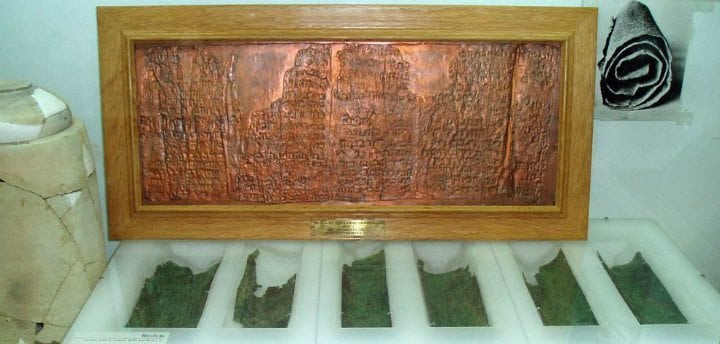
According to the archaeologists, the text contained in the scroll was not a literary work, but a treasure map. The text, written in Hebrew around 50-100 BC, describes 64 different locations which contain gold and silver, and one of the locations was a hidden priestly garment. The treasures described in the scroll are presumed to be from either the first or second Temple in Jerusalem.
Must have been quite tempting for the archaeologists who finally transcribed it to take a treasure hunt to these locations.
13. Screaming Mummy
Back in 1886, a mummy was unwrapped in Egypt that appeared to be writhing in pain, his face stuck in an eternal scream, and according to scientists, it is believed this was a form of punishment that was common in ancient Egypt and this mummy was that of an offender.
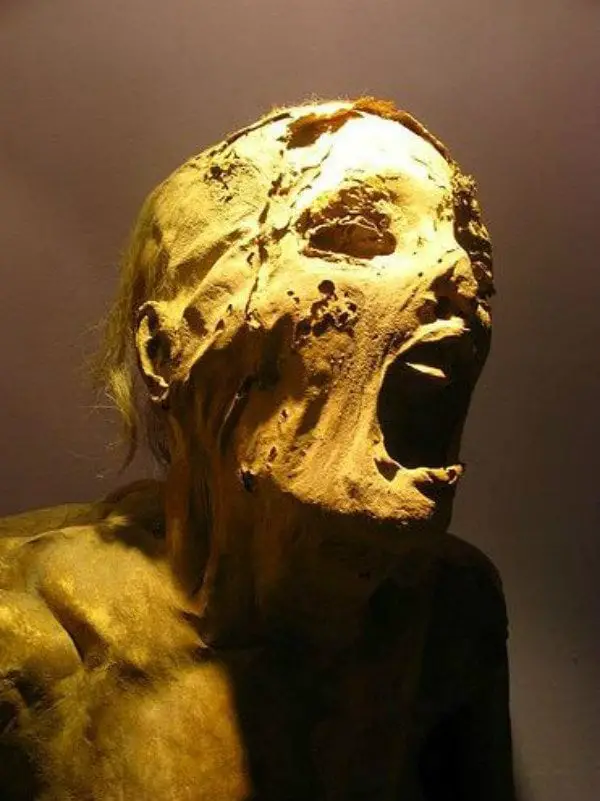
The screaming man has been named “Man E.” and some historians believe that this was the traitor son of Rameses III, and this has been made more believable by recent discoveries that the mummy was around 40 years old, one consistent with the age of the son.
14. Pit of Hands
In 2010, archaeologists made a shocking discovery in an ancient Egyptian palace. The team discovered a pit filled with 16 human hands which were believed to have been buried around 3,600 years ago.
The finding was the first physical evidence to attest to the Egyptian custom of soldiers presenting the cut-off right hand of an enemy in exchange for gold.
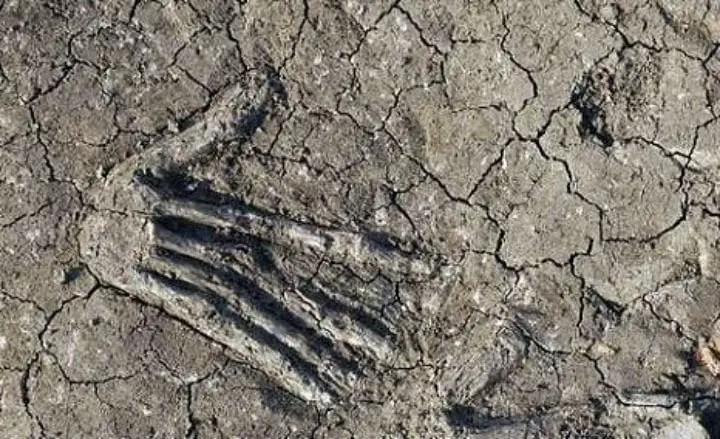
The hands were believed to have been those of the emperor's enemies, which the soldiers presented as a form to show loyalty and was exchanged for gold, in an attempt to build up soldier's morale. Ancient Egyptian artifacts document in gruesome detail the treatment of captives and enemies.
15. Cannibals
In 2010 the remains of 12 Neanderthals were discovered in a cave in northern Spain, and they are believed to have been 49,000 years old and had been eaten by other Neanderthals. The remains found included three adult males, three adult females, three adolescents, two juveniles and an infant, and it is believed that this was a family unit, that have been too weak to defend themselves.
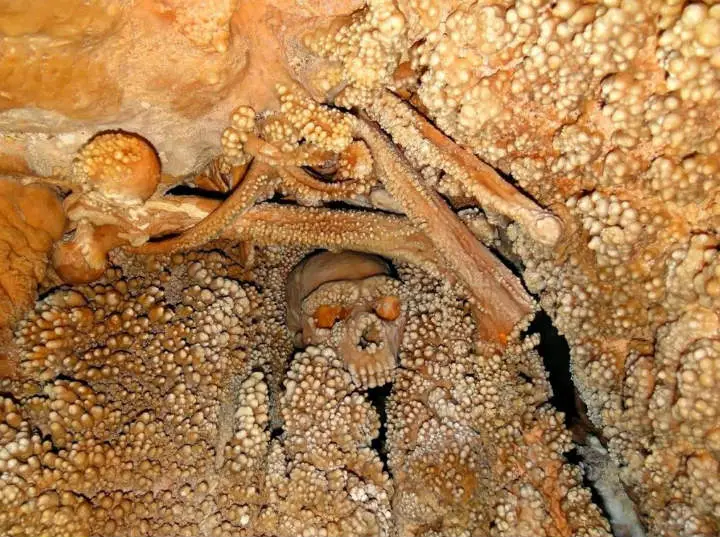
Analysis of archaeological remains shows that prehistorical people practiced cannibalism, possibly one contributing factor to the extinction of the Neanderthals. It is crazy to assume that they ate each other to extinction.
Also, it is believed that humans who were more advanced and had more sophisticated tools killed Neanderthals, brought their bodies back to caves to eat and used their skulls and teeth as dishes and jewelry.
16. Tunnels of Baiae
In 1962 explorers discovered a tunnel system in the cliffs at Baiae, Italy. These tunnels are a mystery as they are not entirely explored by archaeologists. Its is believed that these tunnels contained a temple where citizens could consult the dead called "Oracle of the Dead"
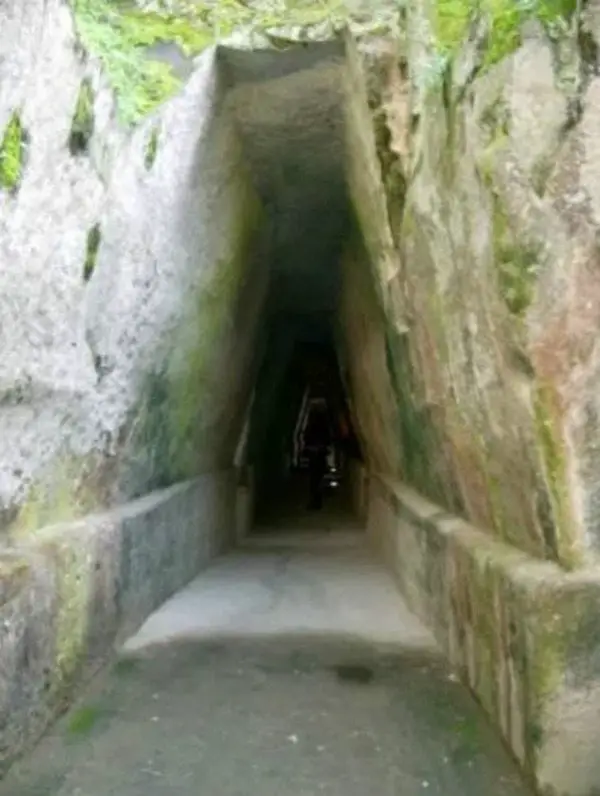
Due to volcanic activity in the area most of Baiae is now under water, and this is part of the reason why it is less discovered. Numerous Roman sculptures have been found at the ruins and excavations have uncovered temples to the Roman Gods Mercury, Venus and Diana, and this has further cemented the idea that it was an ancient temple.
17. The Hobbits
In 2003 a joint team of Australian and Indonesian archaeologists discovered the remains of an extinct species of hobbits on the island of Flores, Indonesia, where they found a total of nine separate human remains.
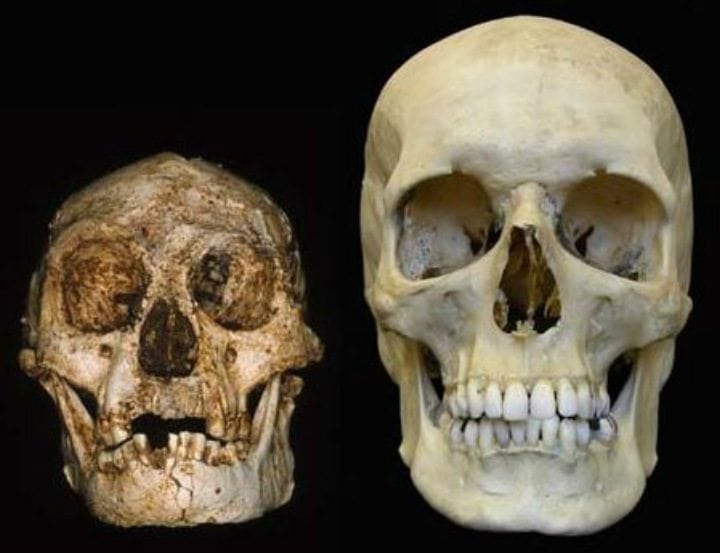
These were named Homo Floresiensis and they stood around 3.3 feet tall and weighed around 55 pounds when they were fully grown. They were around much recent as it was found that they were dated to around 13,000 years and were natives of the island. The discovery has been described as the most spectacular finding in paleoanthropology in half a century and it has really caused excitement among the scientific community.
18. The Great Sphinx of Giza
The Great Sphinx of Giza stands on the west bank of the Nile River in Giza, Egypt. This historic monument is carved out of limestone and is made up of a mythical creature that is partly human and partly lion.
In Arabic the statue is called “Abu al-Haul” or “The Terrifying One” in English.

The dates for the for the commissioning and construction of the Sphinx is not agreed on and some researchers believe it was built around 2,500 years ago. The underlying chambers and tunnels within and underneath the structure are yet to be explored, since they are covered by very heavy stones. Traces of pigment have been found on the statue, suggesting that it was at one point painted vivid colors.
The Sphinx's nose is partly destroyed after it was bombed by Napoleon during the conquest of Egypt.
19. Nazca Lines
The Nazca Lines are giant geoglyphs scratched into the surface of an arid Peruvian plain. They were carved sometime around 500 BC to 500 AD and take the shape of various animal and plant shapes. There are about 900 of the mysterious geoglyphs, and the greatest mystery is who drew them?
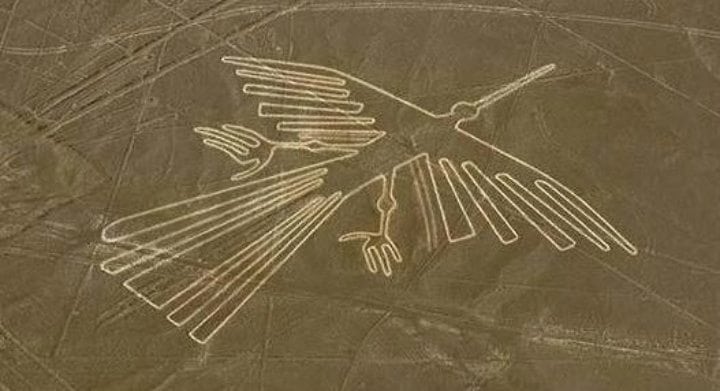
The first discovery of the Nazca was by a group of hikers and this did not become fully apparent until they were fully spotted by aircraft in 1930s. Their purpose is unknown and who drew them is not either. Some researchers hypothesize that the lines were related to astronomy and cosmology, other theories involve religious worship and textile production.
20. Chariots of Zhou
Archaeologists uncovered remains of horses and wooden chariots believed to be around 3,000-years-old in tombs in Luoyang, China. They comprised of five chariots and twelve horses and these dated back as far as 770 BC.
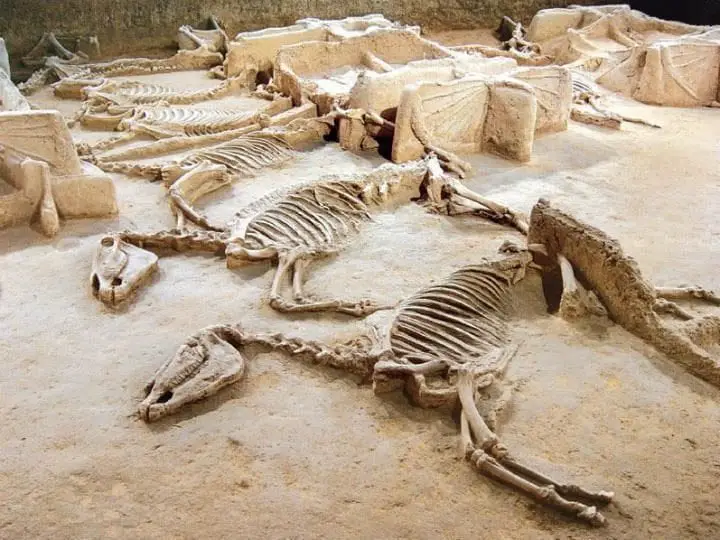
Evidence shows that the horses were slaughtered before being placed in the tombs with the chariots. The tombs also contained bronze-ware and ceramics from the early Western Zhou dynasty. This was a part of the funeral customs that were practiced in the ancient world, where these items were considered to be used by the dead and this explains why they were buried in an orderly way.
21. Easter Island Moai text
The Moai are giant ominous looking humanoid statues carved by the Rapa Nui people of Easter Island. There exists more than 900 of these structures all over the island and contrary to popular belief that they are only heads, these are full bodied statues and most have been buried to the neck.
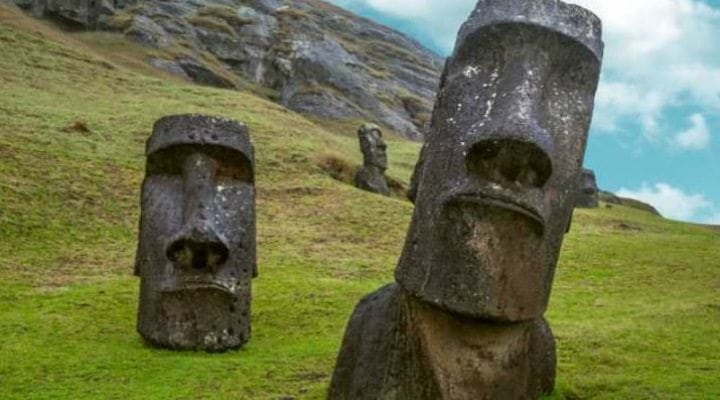
Each Moai represents a deceased ancestor of the Rapa Nui people. The Moai were carved in one location, sometime between the years 1250 and 1500, then transported around the island, with the largest statue being 33 feet high and weighed about 90 tons. Numerous earthquakes in the region have seen many of them toppled over.
22. Ancient Chemical Warfare
Archaeological digs at Dura-Europos in present-day Syria uncovered the bodies of 19 Roman soldiers and one Persian soldier who died from poisonous gas inhalation. uring a Persian siege on the city in 256 AD it is believed that the Persian Sassanid Empire began digging a tunnel under the city walls to circumvent Roman defenses.
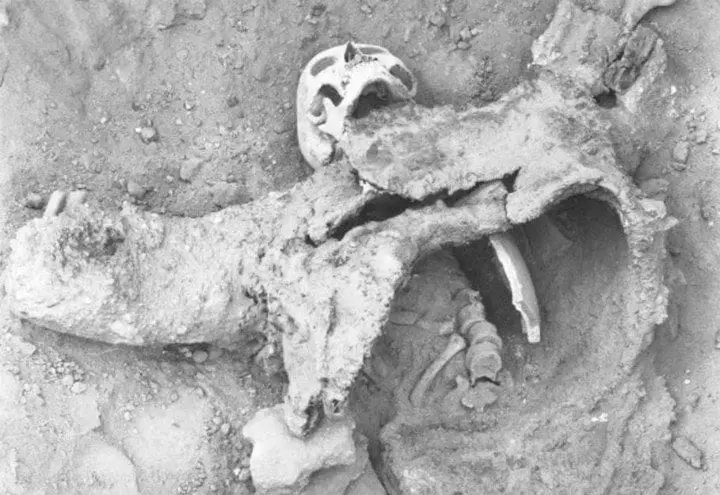
This tunnel system saw the Romans too digging tunnels to launch surprise attacks to the Persians and as soon as the tunnels connected the Persians released a poisonous gas by burning Sulphur and bitumen crystals into the connecting Roman tunnel, thus killing them instantly. This is the most sensible explanation for the bodies found in the tunnels.
23. Hagar Qim
Located on the island of Malta, Hagar Qim is one of the oldest religious sites on Earth. It is believed that the complex was built at around 3600-3200 BC and it has been described as a “unique architectural masterpiece.” due to the magnificent construction. Excavations have uncovered decorative pottery and statues of deities at the site.
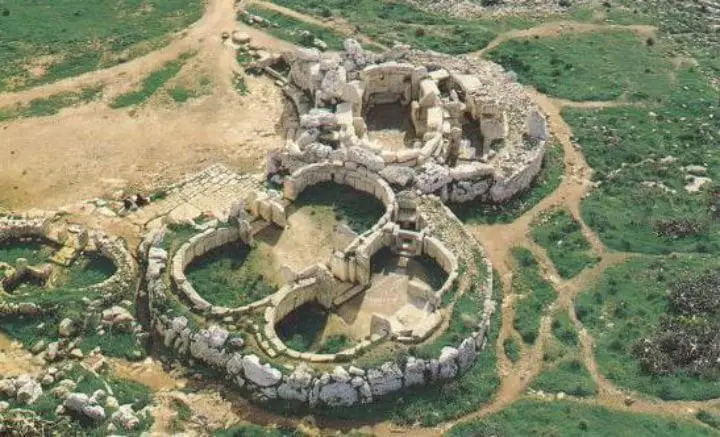
No human remains have been found in or near the Hagar Qim temples however animal bones, most likely ritual sacrifices, have been discovered. Just like many ancient structures, it was built using limestone and thus has suffered severe weathering and this has seen protective tents was erected over the site.
24. Terracotta Army
The Terracotta Army was discovered in 1974 by a local farmer in Shaanxi province, China. The army was buried in pits nearby Emperor Qin Shi Huang’s Mausoleum around 210 BC. and as it was common during ancient times, they were believed to have been guardians for the emperor. The level of loyalty is just amazing.
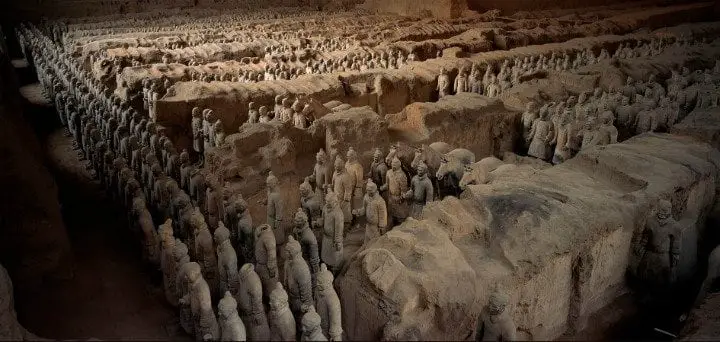
It is estimated that they number over 8,000, as well as 130 chariots and 670 horses. Figures such as acrobats, strongmen and musicians have also been unearthed at the site, and this was for the purposes entertainment. Each terracotta sculpture was also painted.
25. The Cochno Stone
The mysterious Conchno Stone was discovered in 1887 by Rev James Harvey. This stone is a Bronze Age petroglyph carved into a 42 ft by 26 ft stone and studies on it have placed it to have been made during the dates about 5,000 years ago.
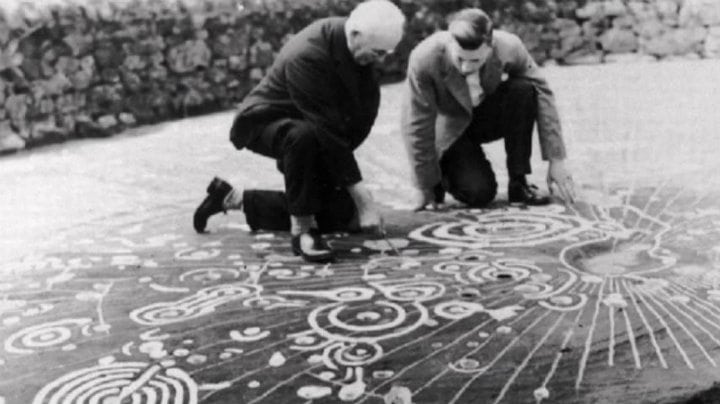
This stone is engraved with patterns of spirals and geometric shapes, and scientists are still in the dark as to why this is so. The stone was buried to protect it from vandalism then later uncovered in 2015 for further research. This is however not the only stone of its kind as there are numerous similar stones.
26. Antikythera Mechanism
The Antikythera mechanism was found in a ship wreck in 1901 off the Greek island of Antikythera. The mechanism was an astronomical clock composed of at least 37 moving bronze gears and was capable of tracking the movements of the sun and moon, as well as predicting eclipses and irregular moon orbits.
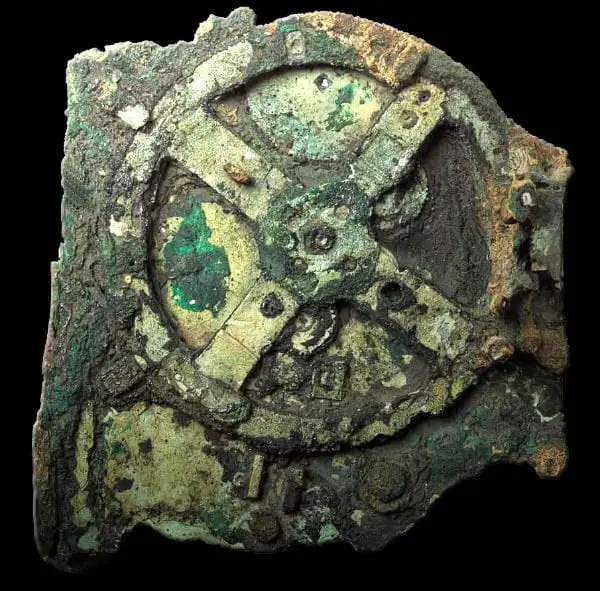
This has been described as the world's first computer and researchers believe it was crafted at around 150 to 100 BC. This technology was however lost for many centuries and was not discovered again until the fourteenth century.
27. Voynich Manuscript
The Voynich manuscript is a handwritten text shrouded in mystery. The manuscript was written in an unknown language by an unknown author. It is believed that the manuscript was written sometime in the early 15th century and it was named after a Polish book dealer who purchased the book in 1912.
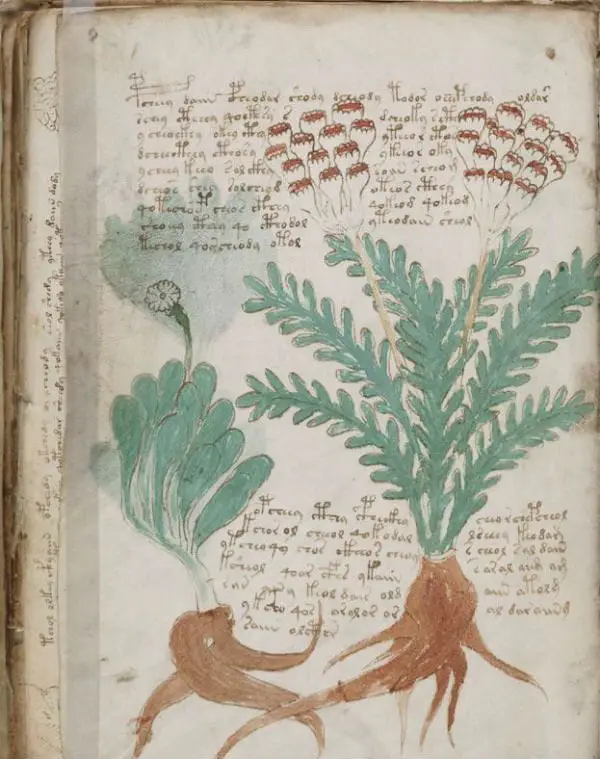
Professional cryptographers and code breakers have attempted to decipher the text and they have always hit a dead end. This has made many assume that it was written as a hoax. Researchers believe that the text was written in northern Italy.
28. Dead Sea Scrolls
The Dead Sea Scrolls are a series of manuscripts discovered in the Dead Sea area of modern-day Israel. These texts holds great historical, religious and linguistic significance as they are the second-oldest known manuscripts of works included in the Hebrew Bible canon.

These texts have been associated with the ancient Jewish sect called the Essenes and are believed to be dated around 400 to 300 BC and are currently being displayed at the Israel Museum in Jerusalem. Both the Jordanian government and the Palestinian Authority claim ownership of the scrolls and this is an ongoing dispute.
29. Baghdad Battery
An archaeological finding later named the Baghdad Battery was discovered in the village of Khuyut Rabbou’a near Baghdad in 1936. This battery is dated to around 250 BC to 224 AD and was believed to have been used either during the Persian Parthian Empire or Sassanid Empire.
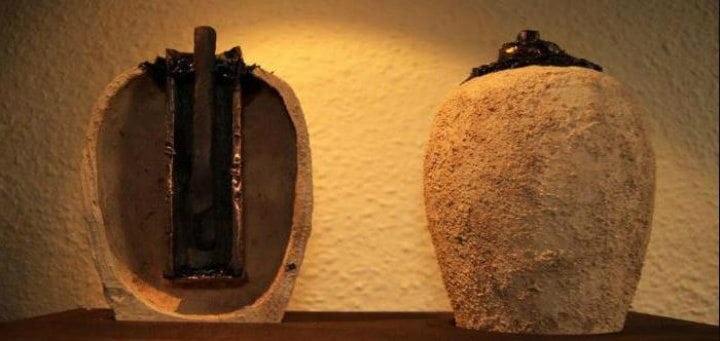
It consists of a terracotta pot with a stopper made of asphalt. This was a really innovative invention as the iron rod was stuck through the asphalt, surrounded by a copper cylinder. The power produced was about 1.1 volts and researchers believe they must have had some boosting mechanism as the voltage is too low, and they do not know how the voltage was used for.
30. Pompeii
The eruption of Mount Vesuvius buried the city of Pompeii under volcanic ash and pumice in 79 AD, and the city was almost lost for almost 1,500 years before it was rediscovered. Due to the lack of air and moisture, the city and its inhabitants were preserved for over a millennium.
The events of this time are even illustrated in a film called "Pompeii" and even though it is very graphical, it is quite informative.
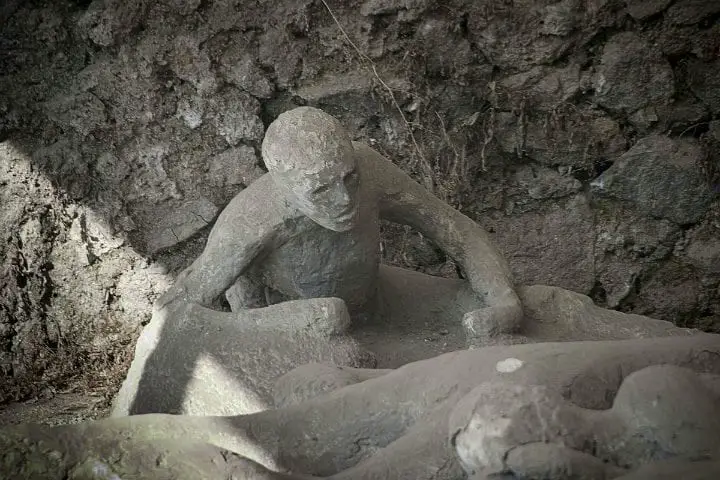
Pompeii has since become a major tourist attraction due to its still intact streets and other buildings. In excavations plaster was used to fill voids in the layers of ash that once held human beings, creating molds of the cities inhabitants in the exact position they were in when they died.
31. The Pilate Stone
During an excavation in Caesarea, Israel, a major discovery was made when a stone was unearthed with an inscription mentioning Pontius pilate and was rightly called the pilate stone. Pilate was the the leader of the Roman province of Judea and served under Emperor Tiberius who is best known for the trial and crucifixion of Jesus of Nazareth.
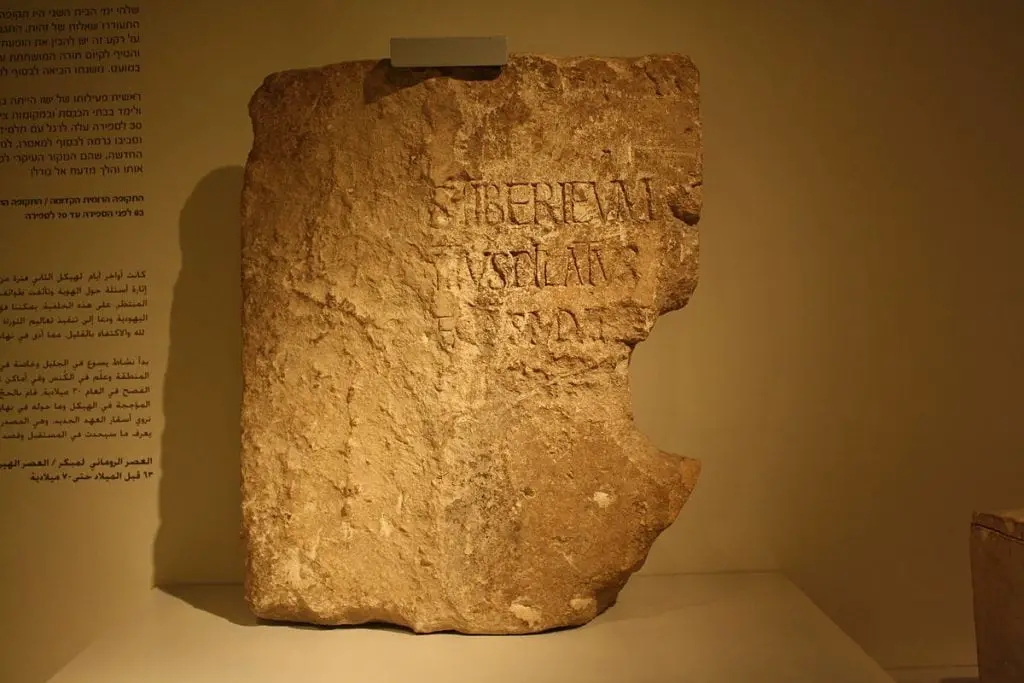
The discovery of this stone also affirmed the existence of pilate, which was only shown from biblical texts. The stone was being used as a building block for a set of stairs in Caesarea’s Herodian theatre, built by decree of Herod the Great. If you are interested in seeing this work of art, it is located in the Israel Museum in Jerusalem.
32. Rosetta Stone
It was from this stone that that researchers were able to decipher the ancient Egyptian hieroglyphics. The stone was created in 196 BC and inscribed with a royal decree in three different languages; Ancient Egyptian hieroglyphs, Demotic script and Ancient Greek.
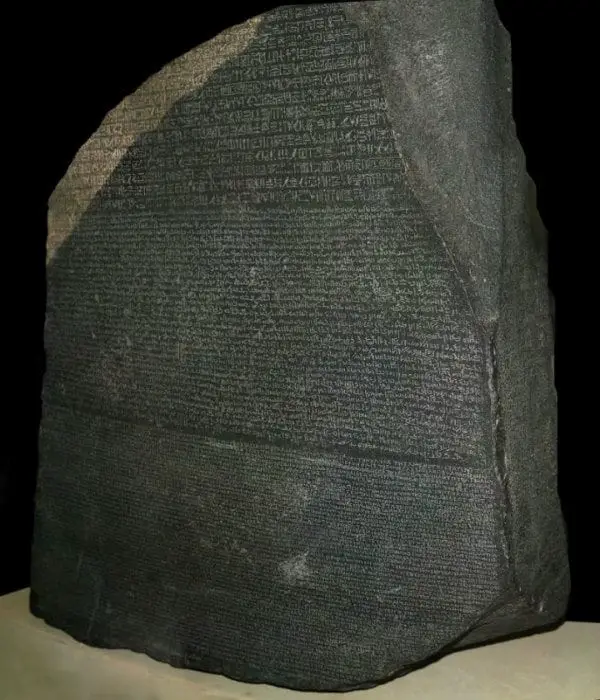
This stone was discovered in 1799 by a French soldier Pierre-François Bouchard during the Napoleonic campaign in Egypt. Prior to this discovery no one had been able to decipher the meanings of the hieroglyphics and it has since been a great assistance.
33. The Jesus Boat
he Jesus Boat, also known as the Ancient Galilee Boat, was discovered on the northwest shore of the Sea of Galilee in Israel in 1986. This is the boat that Jesus and the disciples sailed in.
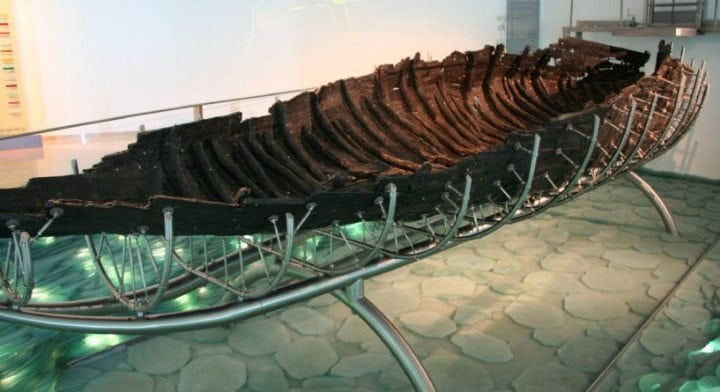
The boat appeared after a drought when waters receded, as the Galilee is actually a fresh water lake and not a sea. The boat is 27 feet long by 7.5 feet wide. There is however no evidence that Jesus actually sailed in this boat or the disciples. Conservative christians have since believed this and they have thus flocked to see it.
34. Andrewsarchus
Back in 1923, a big skull belonging to a previous unknown animal that was believed to exist during the middle Eocene epoch, around 41 to 48 million years ago.This was discovered in Inner Mongolia, China and only one skull has ever been found, bringing to question what this animal actually was.
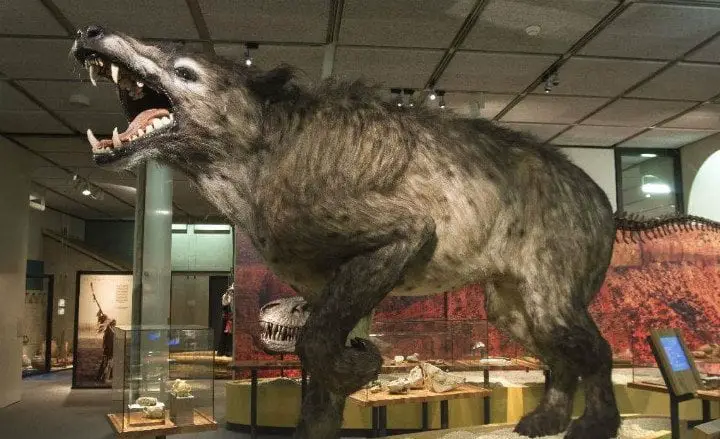
The skull is now on display at the American Museum of Natural History in New York. This animal was declared as the largest known terrestrial mammalian carnivore based on the length of its skull. From the representation shown in this picture, it was quite a terrifying mammal.
35. Mysterious Stone Circles
The discovery of giant stone circles in the Middle East has baffled many researchers and the circles are believed to be at least 2,000 years and are made out of stone walls only a few feet high. People have to hop over them to get inside however.
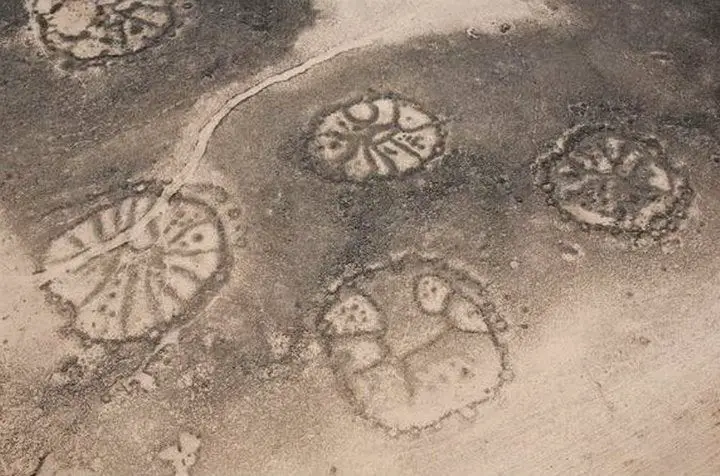
It is believed that the circles may have been constructed during prehistoric times before the existence of written language in the area. They were discovered back in the 1920s.
36. Desert Kites text
These kite like lines were discovered in the deserts of Israel, Jordan and Egypt in the early 20th century by British pilots and they consisted of low stone walls forming lines up to 40 miles long. They draw their name from the shapely resemblance of a kite.
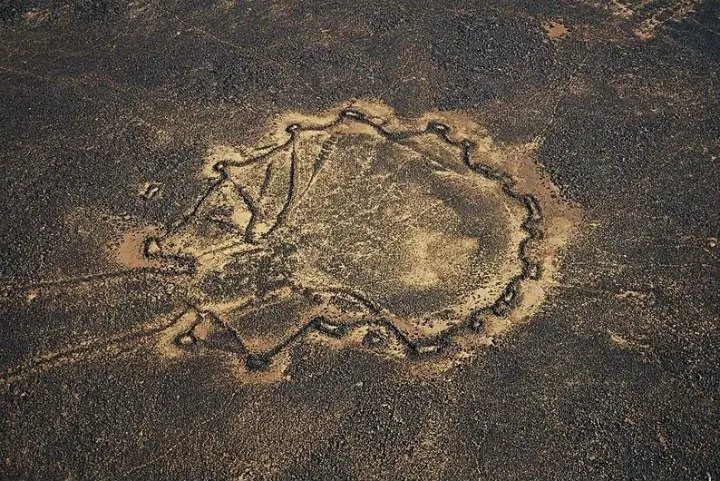
The lines are believed to have been constructed around 2,300 and 2,400 years ago and it is suggested that they were built by local populations to trap large game such as gazelles and other hooved game into killing traps, and this made their hunting even easier.
37. Gobekli Tepe
Gobekli Tepe is an archaeological site in modern-day Turkey dating back 11,500 years.It is believed the site was used as a holy site of worship by the ancient inhabitants.
The Turkish name Gobekli Tepe translates to “Potbelly Hill” in English.
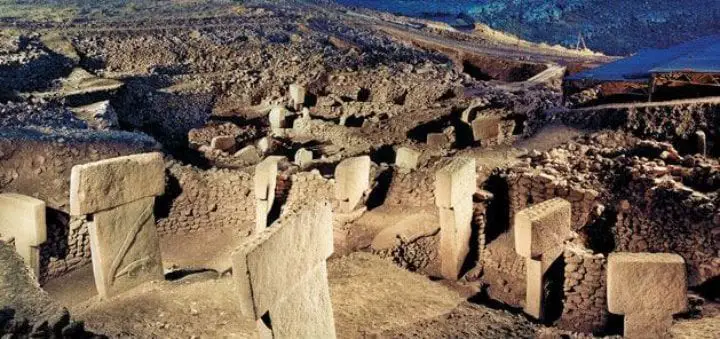
This site predates numerous other archaeological sites and was even referred to as the world's first temple. It even predates the Stonehenge by over 5,000 years! he compound consisted of more than 200 pillars in about 20 circles. The pillars reached a height of 20 feet and some weighed up to 20 tons each. It is impressive as to how the ancients managed to bring together all these heavy stones.
38. African Spearheads
An archaeological exploration in 2012 in South Africa, a bunch stone-tipped weapons that dated back over 500,000 years were discovered, 200,000 years earlier than previously thought by Homo Heidelbergensis. This proved that the invention of stone-tipped tools was far beyond the times we thought.
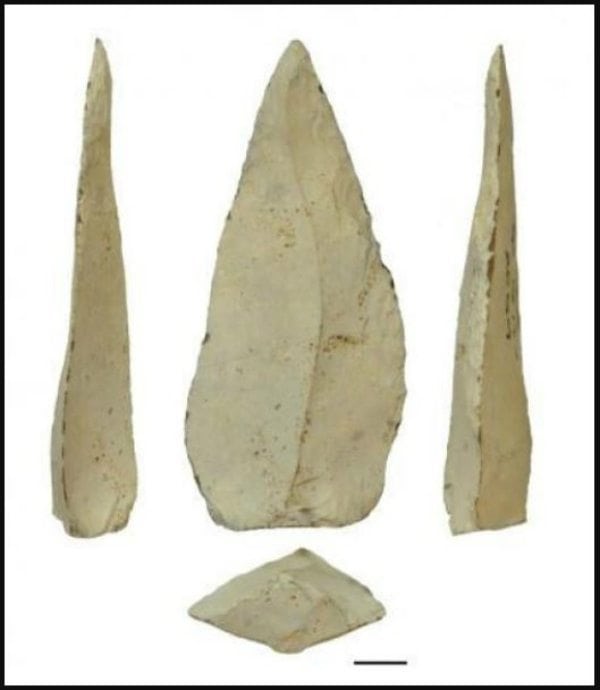
The discovery is not the only one in Africa,and multiple discoveries have made researchers consider Africa as the cradle of mankind. The use of spears dates back to around five million years ago, and stone-tipped spears were dated no more than 300,000 years ago and had been associated with Neanderthals.
This is a great history lesson that has brought us better understanding of our past.